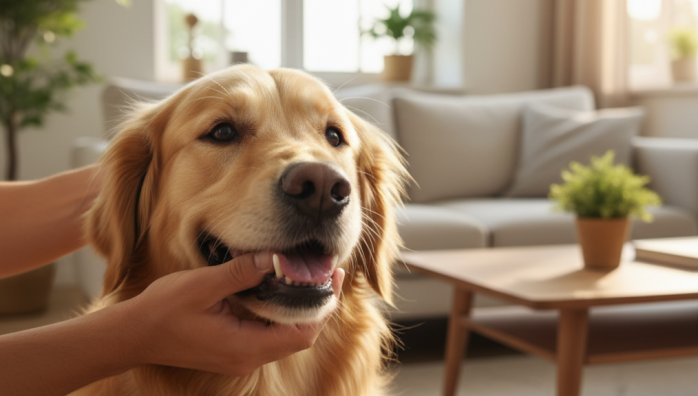What to Do If Your Pet Chokes
by admin in Pet Care Basics 17 - Last Update November 17, 2025

I\'ll never forget the sheer panic that washed over me when my beagle, Cooper, started making a terrifying gagging sound. He\'d been chewing on a new treat, and in a split second, silence was replaced by a struggle for air. It\'s a moment every pet owner dreads. In that heart-stopping instance, I realized how unprepared I was. That experience pushed me to become certified in pet first aid, and now I want to share the crucial steps I learned so you never have to feel that helpless.
How to recognize the signs of choking
The first step is identifying the problem, and it\'s not always as dramatic as you see in movies. I learned to look for a specific cluster of signs that scream \'choking emergency\'. Your pet might be in distress if they are:
- Pawing frantically at their mouth
- Making gagging or retching noises without bringing anything up
- Coughing weakly or having a \'silent\' cough
- Showing obvious difficulty breathing, with exaggerated chest movements
- Drooling excessively
- Appearing anxious and panicked
- Their gums or tongue start to turn bluish-grey (this is a critical emergency)
If you see these signs, you must act immediately. Time is absolutely of the essence.
The first crucial steps: stay calm and assess
My first instinct with Cooper was to panic, which only made him more anxious. Your calm energy is vital. First, carefully restrain your pet. Then, open their mouth to see if you can spot the obstruction. Gently pull their tongue forward. If you can clearly see the object and can easily grasp it with your fingers or a pair of blunt-nosed tweezers, carefully remove it. Be extremely careful not to push it further down their throat. If you can\'t see it or can\'t easily remove it, you must move to the next step.
Performing the pet Heimlich maneuver
This is where technique is critical, and it differs based on your pet\'s size. Remember, this is for a situation where your pet cannot breathe at all. This is just my experience-based guidance, and it\'s always best to get hands-on training from a professional, but knowing the basics can be life-saving.
For small dogs and cats
I learned to hold my smaller pets with their back against my chest, almost like I\'m hugging them from behind. Place your fist just behind their rib cage. With your other hand, give a few quick, firm thrusts inward and upward. After a few thrusts, check their mouth for the object.
For large dogs
The technique is similar to the human Heimlich. Stand behind your dog and wrap your arms around their body. Make a fist with one hand and place it in the soft spot just behind their ribs. Use your other hand to grasp your fist and give 4-5 quick, firm upward thrusts. Check the mouth, clear the airway if possible, and repeat if necessary.
What to do after the object is dislodged
Even if you successfully remove the object and your pet seems fine, your work isn\'t over. This is a rule I now live by: always go to the vet. The choking event or the Heimlich maneuver itself could have caused internal injuries, damage to the throat, or aspiration pneumonia. A professional check-up is non-negotiable for their safety. Please, never skip this step; it\'s always better to be safe than sorry.
How to prevent choking in the first place
After my scare with Cooper, I became militant about prevention. It\'s so much better than needing a cure. I recommend you:
- Choose toys that are appropriately sized for your pet and indestructible if they are a power chewer.
- Supervise your pet with any new treats, bones, or chew toys.
- Cut food and treats into manageable, bite-sized pieces.
- Pet-proof your home by keeping small objects like bottle caps, children\'s toys, and other hazards out of reach.
Knowing these steps gives you a plan, turning panic into focused action. I hope you never need this information, but I feel so much more confident as a pet owner knowing I\'m prepared to help my best friend in an emergency.











